The 4 (actually 5) levels of tool organization
Free time is not free. Free time comes with working efficiently, which minimizes the time needed to get the finished product you so desire. You could ensure your tools are all in the garage, suggesting they are technically all in one place. But nothing is more infuriating than spending five minutes wandering around the garage to find a tool you only need for 30 seconds. And then repeat it again for another misplaced item. It can literally drive a person mad.
On the other hand, there are people who genuinely believe organization is just a waste. Everyone works in their own ways, so we aren’t about to suggest anyone is wrong for keeping their tools how they please. But, with an interest in organization in mind, here are the four levels of tool storage you will likely encounter if you visit enough garages.
Level 0: I have one of those

You are elbow deep in a water pump swap at your friend’s garage when you realize you need a shallow 6-point socket on an 3″ extension. You friend looks at you and says “yeah, I’ve got one of those” and then starts picking up various items and projects on their workbench. Your automotive repair has now turned into a game of “I Spy: Garage Edition.”
We all get caught between projects from time to time, or something of high-importance rolls in and requires pausing something you were actively working on. We how these situations come to life. But if this is your modus operandi, perhaps it’s time to upgrade and quite literally get your poop in a group.
Level 1: It’s in the box somewhere
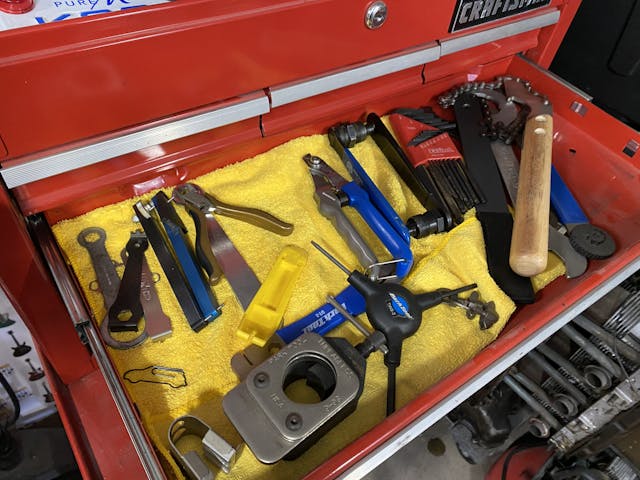
We have now advanced to the most basic level of tool organization: Having everything contained in one place. But the tools are loose and haphazardly mixed. Sockets and wrenches require picking up and turning to see exact sizing, as if denying that the two options of standard and metric exist. You are no longer walking about the garage searching for things, but still pulling drawers like a cabinet maker looking for that jig he knows he made back in 2011.
Not everyone needs to take out a second mortgage to have one of the tool trucks drop off the latest and greatest toolbox, but having one place for your tools is the best course of action if you own tools. Heck, most tool kits these days come in blow-molded packaging that can be downright annoying in some situations, but it undeniably keeps things together and halfway organized. The various ratchets, screwdrivers, saws, and hammers we accumulate with time last longer and work better when properly taken care of and not left in the dirt, or on the floor. (Or in the saltwater marsh that forms underneath anything I park during the winter.) Tools also work best when they are not lost. A tool in the hand is worth… five on the shelf?
Level 2: It’s in that drawer
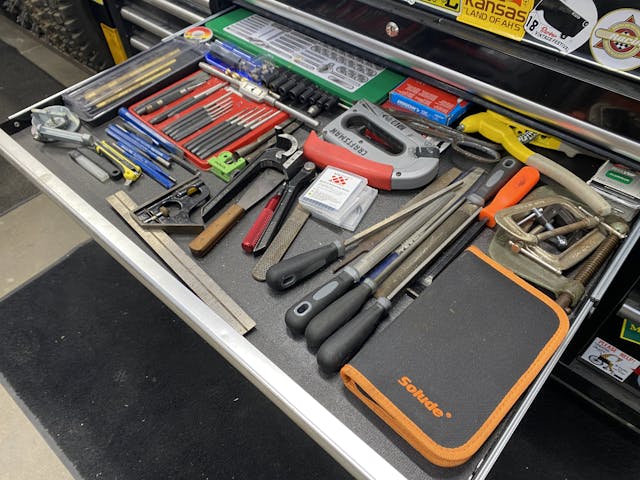
The chaos in now reduced to a smaller space! The drawers wear a label describing what’s inside, and those items are returned to the same place. You still have to poke around to find exactly what you need, and it might even be a little tougher since everything in the drawer is the same type. Need a half inch box wrench in a drawer full of box wrenches? That’s just annoying.
I suspect this is the level most DIY and at-home mechanics operate on, mostly because it is the easiest to maintain. Clean up only requires wiping a few things down and then tossing handfuls back in the prescribed drawer. The time spent finding something is saved by how easy it is to put back. If you value your time at zero or know your tools extremely well, this is a relatively acceptable way to operate.
Level 3: It’s on a rail, in an organizer, or otherwise sorted
To most, this is the level that is considered “basic organization.” The toolbox now uses dividers in its drawers, or various fixtures to attach like-minded tools together. This creates an environment that makes for quicker locating of tools while working on a project. This level of organization also makes it easier when working on something new, or a project with mixed fasteners: I’m looking at you, American OEMs that mix metric and SAE fasteners.
When sockets are mounted to a rail, you can grab the whole rail and take it to your workspace, instead of making multiple trips to get the right size for the task. The rail also ensures sockets will not roll away while performing automotive yoga under a dashboard. Nothing hurts like watching something roll (or fall just out of reach) while literally shoulder-deep working on something. But sockets on rails can’t roll.
Level 4: It’s right there, and I can tell immediately if it’s not
For neurotic wrench turners, there is the ultimate in organization: Custom cut foam. It’s commonly referred to as Kaizen foam, but that is like calling all nose-blowing tissue a Kleenex. This is a multi-layer foam that can be sliced into, then pulled out in sections to exactly fit various tools or parts. We think it might have jumped into garages from the camera and film world, because this foam is great for packing delicate items into travel cases.
Each layer is 1/8″ thick, so it is as simple as tracing the tool you want to store, setting the depth of your knife, cutting the shape (while ensuring you keep the knife vertical), and removing the now-released foam. Bingo: you now have a perfect pocket for cradling anything you can imagine. And as a bonus, most of these foams have one color on top and a different color in the middle layers, allowing you to sight-check if anything is missing.
The idea of tool organization is likely as old as tools themselves, which means the cost to keep your toolbox tidy has dropped over the years. Time is money, and your time is not free. Socket rails and organizers are things that we can say with 100% confidence are worth a trip to Harbor Freight.
So where do you fall in this hierarchy, and do you want to see more tips on keeping your box organized and ready for work? We may have a few tricks that are cheap or free that we could be convinced to share, but only if you promise to not be a level zero organizer. Don’t worry, we’ll take your word and won’t ask for proof.
***
Check out the Hagerty Media homepage so you don’t miss a single story, or better yet, bookmark it. To get our best stories delivered right to your inbox, subscribe to our newsletters.
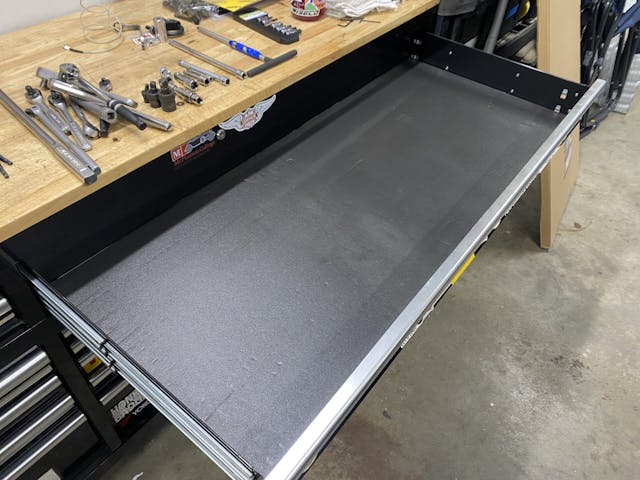
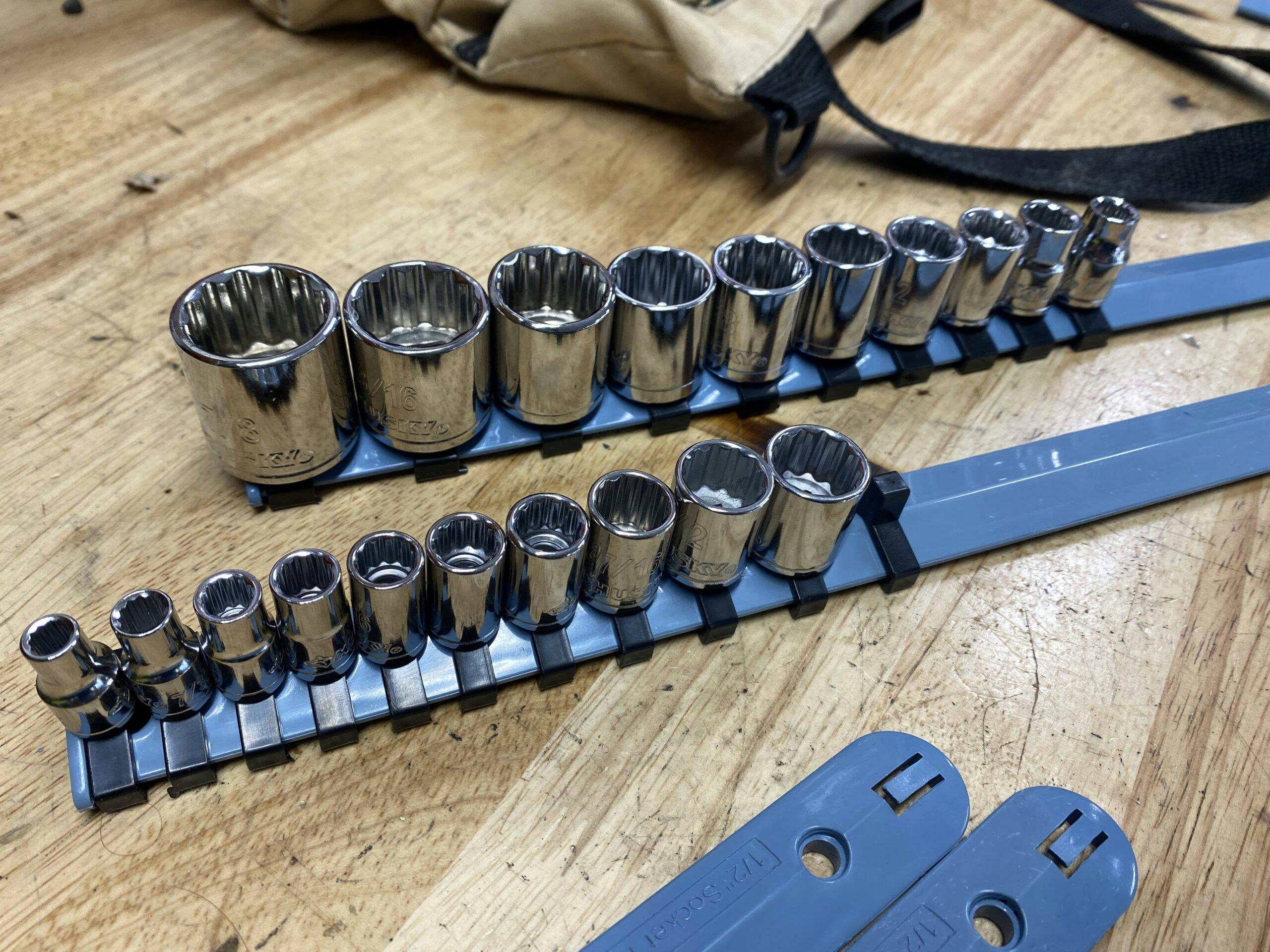
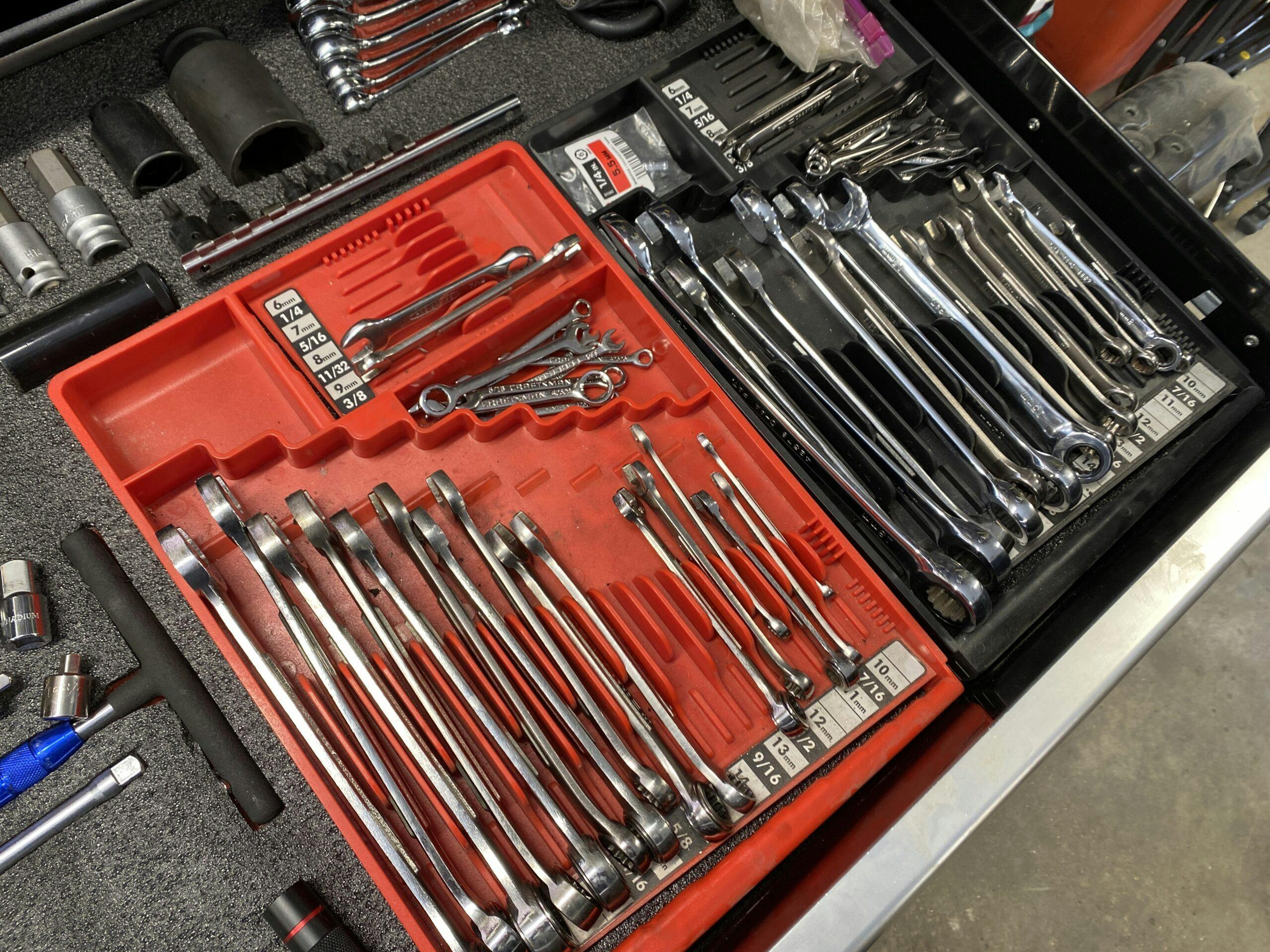
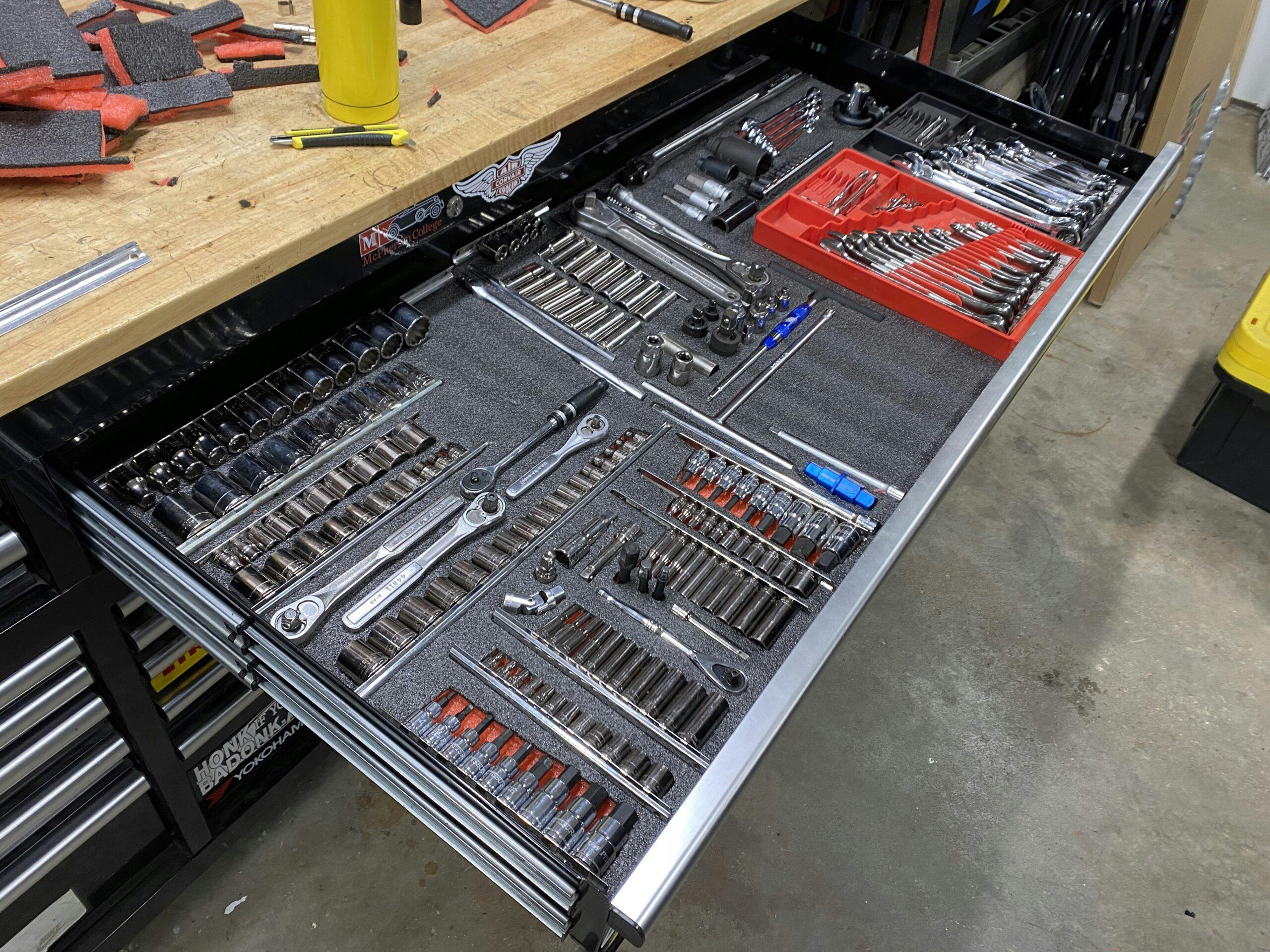



Well I guess I should feel ashamed or embarrassed or something having read many of these comments, but alas I’m not. I am somewhere between a level 1 in regards to my toolbox, but probably a level -1 in regards to the garage as a whole. “I have so much stuff in my garage and barn beyond just my soon to be classic Mustang and 2 Model Ts, that every project or activity is like a scavenger hunt. I have helpers, a bona-fide hoarder I met and married 37 years ago, and until recently, children that contributed to the situation. If I can’t find a tool I go onto the next task or project. The weird thing is I used to be a level 4 guy. Not only was my toolbox that way, but my entire garage was completely organized with labels and a spreadsheet to locate everything. I even thought about creating a diagram showing where everything was but I soon realized it would entail constant updating and management. About this time I came to the conclusion that I was spending as much or more time managing my tools and garage as actually working. So I ended up at level 0.
From reading some of these comments I fear some may need therapy or meds. Way too anal rentative to be any fun. No harm meant but I assure you I would never iron my handkerchiefs or label the slots in the spice rack either. Now, where did I put that label maker?…
I’m about 1.5. Everything gets back in the tool chest, but not always in the same drawer, At least they’re locked up. My socket sets are on a socket rail in one draw with all the handles. Screwdrivers in one draw, wrenches/pliers in another. But when it comes to other stuff, it’s in the chest somewhere.
If you have the wall space, hanging tools within reach of the bench is great. You can see what you want without opening a drawer or separating the tool from its foam cocoon.
I just can’t bring myself to have tools on pegboard when I am finished with them. I lock them into my Snap-on toolbox a the end of the day. All it takes is one goofball to get into my garage and walk away with hundreds of dollars of Snap-on and Matco Tools, some of them inherited.
Firmly in level 2 here. Since I have no matching sets of anything I can spot what size I need by the style/brand/condition without having to read the sizes.
I’m afraid I’m a level 4 or maybe higher. Everything has to be organized and in its place. If I’m working on a project and won’t need a tool that I have out again I put it back in the toolbox then. If I have too many tools out and my bench is cluttered, I stop and straighten up the bench. The foam thing waste too much space. I make my own wrench racks out of square tubing to keep wrenches in order. All my old car parts are on a shelf with a number on the plastic boxes and a chart stating what is in each box. It is the way.
Hey Sportfan, how about a pic of the square tube wrench holder. I need help anywhere I can find it LOL
You should see the levels we have achieved in the Commercial Aviation Maintenance world; over the top!
I couldn’t agree more with the importance of tool organization. It’s incredible how much time can be wasted searching for a specific tool in a cluttered workspace. I’m currently at Level 2, but after reading this article, I’m inspired to take it up a notch. Level 4 with custom-cut foam seems like the ultimate solution. Being able to glance at the toolbox and immediately know if something is missing would be a game-changer. Thank you for the insightful tips and tricks. I’m excited to implement them and streamline my tool storage system. You must also check out beyondtools.com it has some great insights too.